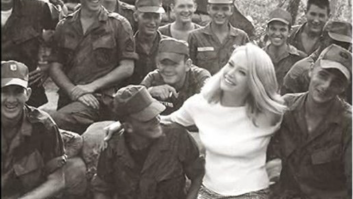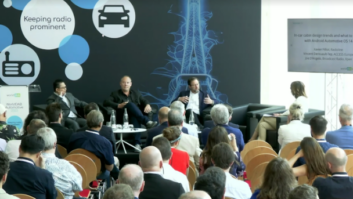Tomorrow (radio) the World!
Mar 1, 2004 12:00 PM, By John Battison, technical editor, RF
Conceived by NPR in 2002 and nurtured by Harris and Kenwood USA, National Public Radio’s multicasting system has just been proved perfectly suited to expand the use of Ibiquity’s HD Radio (IBOC) FM system. This expansion of audio services is particularly gratifying to NPR stations because it opens new avenues for high-quality programming. Classical music is probably the most popular item in the NPR program line up, and the ability to offer more than one source of programming originating from a single channel assignment is something that all noncommercial stations will undoubtedly welcome with open arms.
Both noncommercial and commercial channels have become overcrowded and frequencies are in short supply. The concept of tomorrow-casting should be welcomed by all licensees, both current and hopeful. On Jan. 9, 2004, the triumvirate announced the completion of development and successful testing of the project. More than $1 million has been spent by NPR, Harris, Kenwood and NPR stations to foster the development and testing of this new technique.
Although this new system has been developed by a noncommercial entity, its use is not restricted to noncommercial stations, it is hoped that by mid-March the FCC rules will have been amended so that all FM licensees can use this new system whose official technical designation appears to be supplemental audio channel (SAC). As a direct result of the recent tests, the future looks bright for early acceptance of this new system. In fact, hopes are strong for licensing before autumn sets in.
The successful development of SAC is a tribute to the cooperation between NPR as the utilizer and Harris and Kenwood as the builders of the tool. Following the successful development of transmitting and receiving equipment, a series of in-depth field tests were conducted to evaluate reception and coverage not only at fixed locations but in mobile receivers. Standard FM reception characteristics in the stationary receivers are well known, but the vagaries of mobile reception needed to be evaluated to ascertain their effect on the SAC signal. It was important to ensure that the signal was sufficiently robust in the real world to provide adequate second program service in the absence of the blend-to-analog feature of the main program channel.
The development of digital radio technology has opened the way to a new era for broadcasters. Supplemental audio channels have been added to the standard IBOC radio spectrum by splitting the digital spectrum into two channels. The regular 96kb/s is split into a main channel of 64kb/s and a supplemental audio channel of 32kb/s respectively. Each digital channel is capable of high-quality sound reproduction. The result is similar to an analog subcarrier, but with higher quality in form that is easier to handle.
Field testing
The NPR retained the engineering firm of Hammett and Edison to perform the necessary field testing of the new system. Four areas of the country were selected. In 2001/2002 IBOC preliminary testing was carried out by WETA (90.9MHz) in Washington, DC, and WNYC-FM (93.9MHz) New York, and the routes selected for the new test series were similar to those used in the earlier tests. In the San Francisco area the test involved KALW (91.7MHz) where earlier IBOC test routes were used and KKJZ (88.1MHz) in Los Angeles and Long Beach where three new test road loops were used.
All four of the test areas were originally measured in August and September of 2003. In Because of perceived problems with the RF distribution in the data gathering system, measurements were rechecked from October through December 2003. The original installation used two antennas, a preamplifier and a power splitter. This was not considered satisfactory because of RF noise and uncertainty involving the RF network. The change to a single antenna resulted in an improved, simplified arrangement.
The original PAC audio coder was also replaced by the new HDC audio coder and it was necessary to retest with the new device. This retesting, referred to as regression in the report, was performed in the Washington and New York markets. Apparently the difference in the results was not considered to be strongly significant and it was confined to the eastern market stations. Standard IBOC test runs were made in the New York and Washington test markets.
Figure One shows the mobile test equipment as originally connected. Figure Two is a block diagram of the test equipment setup as finally modified. The equipment was mounted in a van and every day before tests commenced in each area the van was driven to the same spot and calibration checked. The GPS system was used extensively to define measuring points.
Test results
To provide clear and concise test results the report includes maps that show the routes followed, the measured field strengths and signal assessment. The four test areas were chosen to represent for different types of terrain. The standard FCC method of predicting coverage obviously would not suffice for these widely differing terrain conditions. Therefore the well-known Terrain Integrated Rough Earth Model (TIREM) was used because it evaluates the profile between sites and selects the most probable mode of propagation that results based on terrain profiles. This system uses the USGS three-second terrain database and is considered to be the most accurate method of predicting signal strength where propagation paths are accurately known.
The FCC defines the receiving antenna height as 30ft. above ground. This value was used in the TIREM calculations. Because of this, some of the contours shown represent specified field intensities, which may or may not be the same as FCC service contours. Shading has been used in the maps to improve information presentation.
The Hammett and Edison Report includes a large number of maps. Four of these, one for each of the four testing locations, have been reproduced here.
The first map is the HD Radio only run for Washington DC using WETA. This produced a 66dBu TIREM service area compared with 64.9dBu. The difference of 1.1dBu is considered to be acceptable.
Because of the size of the city of New York several maps were provided in the report. Shown here are the results of the outbound group performance. The report shows that a 61dBu TIREM service area was obtained for the SAC channel.
No regression testing was performed in the Los Angeles/Long Beach area. In this market a 70.8dBu TIREM was obtained. It was anticipated that, based on regression data in other markets, a TIREM service area some 2dB to 3dB lower would be obtained.
Because of time and expense constraints regression tests were not implemented in the San Francisco Bay area. In this market the test station, KALW, is relatively low power and is located in central San Francisco. Decoder dropout in the Northwest occurred in tunnels and the areas in the Southeast were badly shadowed by financial district buildings.
Comments
Co-channel and adjacent-channel interference were significant at times in the Washington market. It appears that a certain reduction in coverage occurred in the Washington area where the test station’s 60dBu contour received strong in-band signals.
Based on the contents of this report, it appears 95 percent certain that Tomorrow Radio will provide a usable service area within an FM station’s 60dBu to 70dBu service area, assuming that the IBOC performance of production line receivers from Kenwood and other manufactures will be the same as the equipment used in the tests. It is possible that short-spaced co-channel or adjacent-channel stations and unusual terrain features could degrade the Tomorrow Radio service area. On the other hand, given ideal conditions the service area could exist below 60dBu.
Map images courtesy of Hammet and Edison Consulting Engineers.












